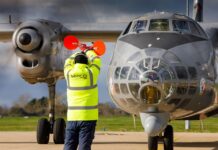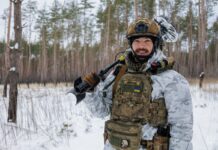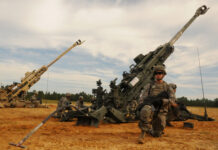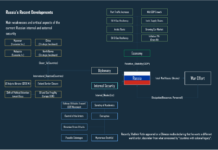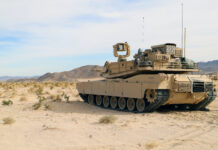At the beginning of November, Russian President Vladimir Putin held a series of meetings with senior officials from the MoD and heads of the Russian defence industrial base. The meetings’ agendas covered the development of the Aerospace Forces and the Navy as well as recent technology developments.
As the Russian Supreme Commander, Mr Putin elaborated on the final stage of the state procurement programme, GPV-2027 in Russian. He said that armament programmes in the US and NATO, as well as military exercises near the Russian borders were the main reason for the need of increased armament efforts in the Russian Federation. He pointed out that another US ship had entered the Black Sea, saying: “we can look at it through binoculars or through the sight of the related weapon systems”.
Mr Putin also stressed his concern about the possible deployment of medium range missiles from the US in Europe and other areas.
Specific Procurement Areas
Talking about the contemporary results of the GPV-2027, Mr Putin noted “a significant progress” in air defence.” In accordance with the decisions made earlier, in the coming years, more than 200 aircraft and 26 S-350 and S-400 anti-aircraft missile systems, as well as the first production items of the new S-500 anti-aircraft missile system, were to enter operational service. In general, the current pace of modernising the air defence forces could bring the share of newly acquired modern weapons and equipment to at least 80 per cent of the total inventory between 2025-2027, Mr Putin said.
Russian experts estimate the costs of such spendings to exceed One Trillion Rubles (more than US$14 billion). Mr. Putin also stated that the Russian Navy received 49 new combat vessels, nine shore-based missile systems and nine aircraft. With special attention to naval aviation, he defined the share of modern weapon systems in the Navy to exceed 70 per cent as an objective.
The President also elaborated on UAVs. He said that the forces had already received over 2,000 drones to be operational but stressed the need to increase efforts in this segment. Putin stated that drones had proven to be effective in recent conflicts and Russia had developed counter-UAV systems including those countering “terrorist drone attacks in Syria”. We have learned how to counter such attacks and are doing it effectively”, the President said.
New Technology in Russia
Mr Putin also stressed the importance of developing new hypersonic weapon systems, high-power lasers and new robotic military systems for the armed forces.
Furthermore, he paid special attention to the application of artificial intelligence to improve combat efficiency. “Such technologies should be actively used in command and control systems, communication systems for data transmission, as well as high-precision missile systems,” the President said. He added that he also saw progress in the implementation of AI in robotics, for drones and deep-sea vehicles.
“All these priorities and tasks should be considered in the new state armament programme until 2033. The development of a respective database in the Ministry of Defence is already underway, ” Mr Putin concluded.




